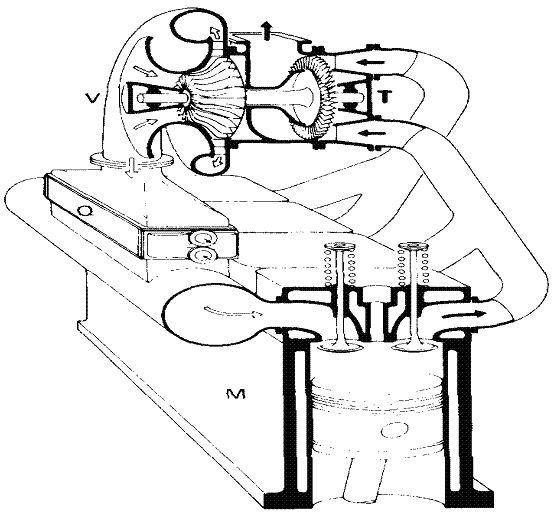Turbo charging made easy - Learn the basics of pressure charging
Introduction
A normally aspirated engine induces air into its cylinders at atmospheric pressure during suction stroke. This air can burn a limited quantity of fuel injected at the end of compression stroke. The power produced in each cycle of the engine depends on the quantity of fuel burnt, which in turn depends on the quantity of oxygen available in air induced in each cycle. In order to increase the power of the engine without increasing its dimensions, we must burn more fuel, which will require more air to burn this extra fuel.
Since the volume of the engine cylinder is limited, we must increase the pressure of density of the air taken during suction stroke. This is achieved by taking the air at the time of suction stroke at higher pressure than atmospheric pressure. This process of taking air in the cylinder at higher than atmospheric pressure during suction stroke is termed as pressure charging. This article sums up the science of turbo charging that has been made easy for you to understand
How is pressure charging achieved?
Charge air at higher pressure for diesel engines can be produced by using mechanical blowers (centrifugal or reciprocating type) operated from engine take off shaft, by independent electrical motor or, by utilizing waste heat in exhaust gases using turbochargers. As first two methods use power, only turbochargers are suitable for use to get more power from the burning same quantity of fuel.
Earlier designs of diesel engines had attached reciprocating air compressors to produce charge air under pressure. They used large chunk of engine shaft power thereby reducing the effective power of the engine.
Electrically operated blowers also consume extra fuel to produce required compressed air for pressure charging resulting in reduced power produced per unit of fuel.
Turbochargers operate by using kinetic energy and heat in the exhaust gases, which rotates the turbine wheel shaft having centrifugal air blower at its other end. The blower produces air at higher pressure for supply to the engine. As the waste heat in the exhaust, which otherwise would have been released to atmosphere, is used to operate the turbocharger and no extra fuel is used to get increased power from the engine due to pressure charged air.
Pressure charging
What are the advantages of pressure charging?
There are two distinct advantages namely,
-
Depending on the pressure of the charge air, more fuel can be burned in the engine giving more power from same engine.
-
Better scavenging (removal of exhaust gases from previous cycle) of the cylinder is achieved during each cycle resulting in increased efficiency of engine.
-
Waste heat in the exhaust gases is used to operate the turbocharger resulting in more power produced for same fuel compared to normally aspirated engines.
- Engine operating temperatures are reduced due to cooling effect of excess charge air resulting in reduced thermal stresses in the engine parts, which may otherwise get overheated. This reduces the maintenance costs and results in longer life for engine parts.
While turbocharged four stroke diesel engines face any problems, turbocharged two-stroke diesel engines particularly the large ones, are difficult to start from stop position and, are also difficult to run at low speeds. This is due to the fact that it takes little time for the turbocharger to pick up speed from stationary position as exhaust gases do not have sufficient energy in the beginning to cause quick rotation of the turbine wheel.
Why the charge air is cooled prior to delivery into engine?
On compression in the blower, the air gets heated which is cooled in charge air cooler prior to delivery to the engine. Cooling has two advantages namely;
-
Hot air has lower density. Hence, less weight of air is contained in the cylinder combustion of fuel resulting in less power produced per cycle. By cooling the engine, its density is increased resulting in more fuel burned per cycle producing increased power.
-
Hot air will increase the operating temperatures of the engine resulting in extra thermal stresses, increased maintenance and reduced life for engine parts.
